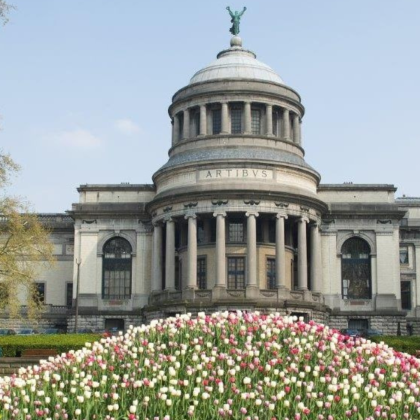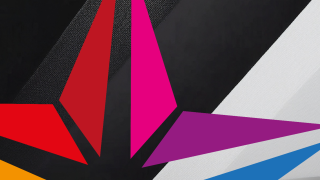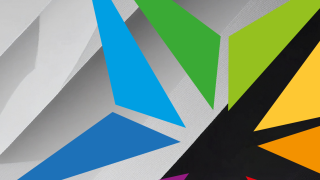3D-4CH
The Online Competence Centre in 3D for Cultural Heritage (3D-4CH) aims to support the digital transformation of cultural heritage institutions (CHIs) across Europe. Designed as an accessible online platform, the competence centre will offer certified training programs, good practices, and advanced tools for 3D technologies to foster innovation, collaboration, and learning. Together with 28 international partners, Sound & Vision will contribute to the online hub and its training programs.
The Online Competence Centre in 3D for Cultural Heritage (3D-4CH) aims to support the digital transformation of cultural heritage institutions (CHIs) across Europe. Designed as an accessible online platform, the competence centre will offer certified training programs, good practices, and advanced tools for 3D technologies to foster innovation, collaboration, and learning. Together with 28 international partners, Sound & Vision will contribute to the online hub and its training programs.

Online Competence Centre in 3D for Cultural Heritage
The Online Competence Centre in 3D for Cultural Heritage aims to be a vibrant hub, designed to transform how cultural heritage is preserved, digitized, and shared for educational and societal benefit. The online platform will bring together CHIs and researchers to unlock the potential of 3D technologies across four key pillars:
- Training and Capacity Building: Cultural professionals will be empowered with a suite of interactive online courses, in-person workshops, and immersive seasonal schools.
- Services and Tools: A curated collection of cutting-edge resources, including guidelines, good practices, and state-of-the-art tools in 3D digitization, artificial intelligence (AI), and extended reality (XR) will be provided.
- 3D Deployment: New 3D cultural assets will be created and existing ones will be enhanced, integrating standards for metadata and sustainable archiving. In this way, the Centre will contribute to a unified and accessible European cultural data space. In addition, we aim to develop new storytelling scenarios using 3D content in eXtended Reality (XR) to allow for immersive experiences for visitors.
- Research and Development: By collaborating with leading research initiatives in next-generation technologies, the Centre will ensure the seamless application of innovations to real-world cultural heritage challenges.
The value of 3D digitisation
Now that it is clear what will be done within the project, let’s take a step back and ask the main question: Why 3D digitisation? First of all, 3D technology offers valuable tools for preserving cultural heritage. They can be used to create highly detailed digital replicas of objects, which not only contribute to their preservation for future generations, but also offer protection against physical wear and tear and unexpected damage.
Second, 3D digitizations open doors to make cultural heritage more accessible and visible. Digital contents can be viewed outside of the physical barriers of museums and archives, and can be taken into for instance classrooms and libraries. In addition, 3D objects can become part of a whole new world of heritage storytelling using XR to create virtual museums and heritage sites for immersive experiences.
Large institutions often have the resources to work with advanced technologies to make use of the opportunities 3D content has to offer. Smaller heritage organizations, on the other hand, often lack the necessary expertise or financial resources to harness the potential of 3D for their collections. With 3D-4CH, we aim to make the technologies more accessible to all.
Role Sound & Vision
Sound & Vision manages one of the largest digitalized media archives in the world, packed with radio, television, YouTube videos, objects, written press, podcasts and games. We are always on the lookout for ways to make our collections more visible and accessible. In the past, Sound & Vision was involved in projects like 5Dculture and TRANSMIXR; both investigated how digitized archival materials can be experienced by visitors in immersive environments.
With 3D-4CH, we want to take the outcomes of these projects to the next level. Sound & Vision will explore the opportunities of XR storytelling with archival materials. More specifically, we will investigate how digitized (3D) content can be showcased in new XR scenarios using digital tools like (social) VR and AR, to increase its accessibility.
In addition, we will look into the deployment of 3D content. Since Sound & Vision is also involved in the Common European data space for cultural heritage (DS4CH), the Cultural Heritage Cloud (ECHOES ,ECCCH) and the Trusted Media Data Space (TEMS), we aim to create synergies between these various platforms.

A Special Focus on Ukraine
At its heart, the project is deeply committed to fostering inclusivity and addressing urgent cultural needs. Inspired by the 4CH SUM – Save Ukraine Monuments initiative, the Centre places a strong emphasis on Ukrainian cultural heritage, actively involving Ukrainian CHIs in all project activities. By creating a dedicated pipeline for integrating Ukrainian 3D content, the project seeks to preserve and celebrate Ukraine’s rich cultural legacy during challenging times.
Events
-

Winter School 2026
From January 21 to 23, 2026, the 3D-4CH Winter School will take place in Brussels, and Sound & Vision will be there too! The three-day event is for cultural heritage professionals and digitization specialists who want to deepen their knowledge of 3D technologies. What to expect? Keynotes on digital cultural heritage, practical sessions on the latest 3D tools, techniques, and workflows, and of course networking!
Partners
The consortium of 3D-4CH consists of 29 organisations and institutions, all with their own expertise. The partners are:
INCEPTION, Università degli Studi di Ferrara, Fondazione Bruno Kessler, EUROPEANA Foundation, Connecting Archaeology and Architecture in Europe - CARARE, Time Machine Organisation, IN2 Digital Innovations GmbH - IN2, The Discovery Programme Centre for Archaeology and Innovation Ireland - DISC, ARCTUR, RDF Ltd, Pixelated Realities, Consiglio Nazionale delle Ricerche - CNR-ISPC, The Cyprus Institute, Poznan Supercomputing and Networking Center - PSNC, 3D Research, European Fashion Heritage Association, Talent Anonymos Etaira Pliroforikis – TALENT, Michael Culture Association, ATHENA Research Center, KMKG – Royal Museums of Art and History, University of Jaén, Research Institute for Iberian Archaeology, Europeana Network Association, NGO Volyn Foundation, Instituto Nazionale di Fisica Nucleare, Fondazione PIN - Polo Universitario Città di Prato, Highbury Research & Development Ltd., Dipartimento della Protezione Civile, Centre Nationale de la Recherche Scientifique - CNRS-MAP.

This project is co-funded by the European Union. Views and opinions expressed are however those of the authors only and do not necessarily reflect those of the European Union or the granting authority (Directorate-General for Communications Networks, Content and Technology). Neither the European Union nor the granting authority can be held responsible for them.





